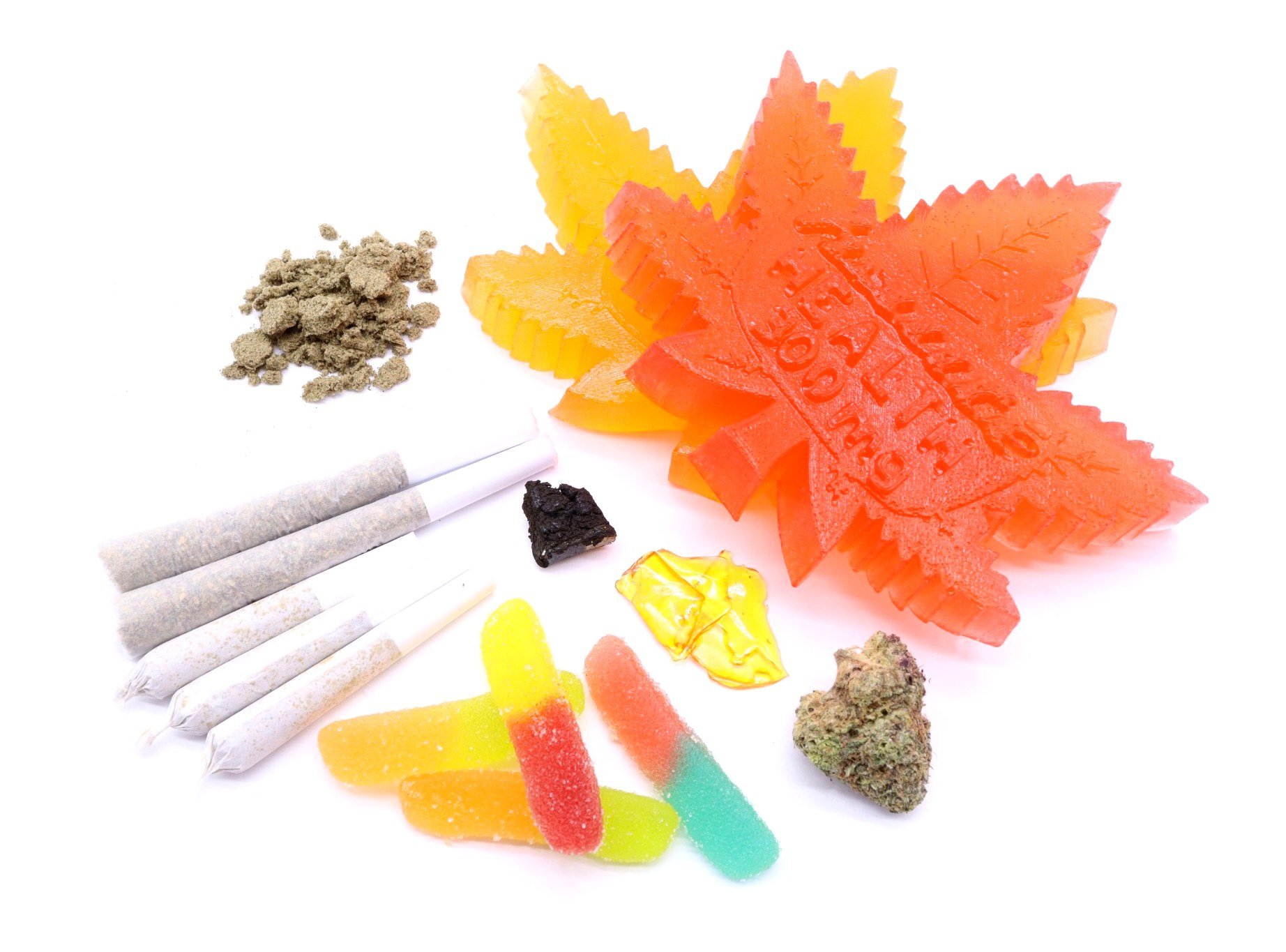Stoners are very insightful and inquisitive people. Many cannabis aficionados are the complete opposite of how society wrongfully accuses them to be – they’re resourceful, thoughtful, creative, energetic, innovative and detail-oriented. Stoners aren’t lazy, zombie-like husks that wander around looking for their next munchies score, they’re often DIYers, artists, builders, or creators of some fantastical things while they’re “high”.
Not convinced? Just think of the amount of work it takes to grow a few plants or a crop from seed to harvest. Imagine all the different ways that a cannabis crop can go awry – all the time, effort and resources it takes to harvest buds from just a handful of plants. Now add to this lengthy and tiresome process the additional effort it takes to process the raw cannabis flowers into usable products. Grinding up buds and rolling them into joints isn’t too sophisticated, but rendering your cannabis flowers into creams, oils, sprays or edibles can take a lot more technical know-how & skills than your average 3-course dinner.
There are so many different kinds of cannabis products you can make that have their own unique set of benefits. One of the most popular concentrates/extracts that many cannabis fans have switched to in recent years is rosins and/or resins. Commercial rosin pressed weed made from hydraulic rosin presses have flooded the markets as demand for high-quality, all-natural rosins have seemingly reached their peak.
Rosin pressing kief or plant materials isn’t a new technique by any means – rosin pressed weed has been around since the early 1900’s (maybe even earlier if you consider some traditional practices in Eurasia and South America). Have you ever tried rosin pressing kief or plant material? What is a rosin press exactly? In this rosin pressing guide we’ll squeeze out the basics of rosin pressing and determine the pros & cons of rosin pressed weed.
WHAT IS A ROSIN PRESS?
A hydraulic rosin press or commercial rosin press are very common pieces of equipment in many cannabis growers’ homes. However, some of these units are very large and therefore can cost you a couple arms-and-legs, so handheld or countertop rosin presses have staked their claims as important items in today’s long list of cannabis must-haves. A typical rosin press is essentially two metal plates that can be heated up and smushed together to create rosin/resin.
Rosin press machines can be categorized by their smash plates (sometimes called ‘press plates’), a heating mechanism and a press, lever or hydraulic system for applying pressure. Simple rosin presses like hair straighteners only require pressing by hand which is convenient, however they aren’t able to achieve the same level of consistency as hydraulic rosin presses.
Rosin bags, screens or sheets often come with commercial rosin press machines but most homemade extractors just use wax paper. The catchment device + material and size of the press plates will determine how much rosin you can extract with each use. There are a variety of sizes from small, handheld rosin presses to larger commercial/hydraulic rosin pressing machines.
Rosin pressing kief or weed used to be expensive, but some creative stoners have even fashioned their own rosin presses from household items like waffle makers or panini grills. You can DIY your rosin pressing experience or invest in some quality manufactured machines with relative ease.
Rosin presses are sometimes referred to as ‘wax presses’ or ‘rosin machines’. These kinds of extraction machines all utilize two simple catalysts to produce high-quality rosin: heat and pressure. Many rosin presses are like a panini maker or hair straightener – heated metal plates that can be pressed together. Some people, in fact, do use hair straighteners to derive their own quick-and-easy form of rosin but you might’ve guessed already that this isn’t very efficient, nor does it produce high-quality resinous extracts.
Like with most cannabis DIY products, you get out of your plants what you put into them, and this usually means the more you need to extract from your weed the more you’ll have to spend on sophisticated equipment. Now that we understand what is a rosin press, let’s go over some of the pros & cons of rosin pressing kief or rosin pressing weed at home.
PROS & CONS OF ROSIN PRESSED WEED
Rosin pressing kief or rosin pressed weed have several noticeable advantages to other kinds of commercially produced resins, waxes, shatters or other concentrates. Most people who invest in hydraulic rosin presses are more naturally-inclined, they require a very specific dose of cannabinoids, and they’re very conscious of what kinds of inputs go into the cannabis products that they buy. Here’s a few reasons for and against investing in rosin presses over other concentrates extractors:
CON: PRACTICE DOESN’T ALWAYS MAKE PERFECT
Even with the number of rosin pressing guides out there today, many people still find it difficult to get into rosin pressing weed on their own. Many rosin pressing guides focus on the procedures for making rosin/wax but they don’t teach would-be extractors about the importances of your weed/kief. Sometimes it’s not how you press but WHAT you press that will matter the most for your final product. Growing high-quality, high-yield strains will undoubtedly lead to higher potency rosin with much more flavors & aromas. This isn’t an easy undertaking, however, so many newbie rosin pressers try to create a tasty, potent rosin out of dud buds.
PRO: SOLVENT-LESS, EXTRACT-MORE
One of the top reasons why some stoners choose rosin pressing weed or kief over other concentrates is because it is a simple, natural and chemical-free approach to extracting cannabinoids & terpenes. There’s no solvents or processing agents involved – just heat and pressure.
CON: HARD-PRESSED FOR VOLUME
Homemade rosin doesn’t usually yield a whole lot of the good gooey stuff. Even some commercial rosin presses you can install in your home don’t make more than a few grams of rosin or wax. This is strictly on a per extraction basis – you can do repeated presses to make as much as needed. Still, some people find it tedious to have to press their buds or kief a number of times, which is why they spend the extra dollars on commercially produced rosins.
PRO: CUSTOMIZED TO YOUR TASTES
Making rosin at home with your own rosin press does take a bit of work, but one of the best parts is that you can customize, experiment and play mad scientist with the buds or kief that you extract from. You’re supposed to have fun with it, so rosin pressing weed or rosin pressed kief can provide the opportunity to achieve some truly unique and impressive rosins/waxes.
CON: NOT IMPRESSED WITH THE MESS
This is probably true for all homemade extracts, but rosin pressing in particular is a messy affair. Pressing buds and catching the gooey cannabinoids and terpenes that ooze out of the trichomes doesn’t sound like a neat, tidy extraction process does it? You can try to reduce the mess by pressing smaller batches each time, but even if you take extra steps to maintain a clean working area the rosin can have other plans.
ROSIN PRESSING GUIDE
To get started pressing your own delicious, aromatic and potent rosin you’re going to need a few things. First of all, you obviously need to have a rosin press device. This can be handheld and small or a larger commercial rosin presser – whatever production demands you have, buy a rosin press that suits your needs.
Next, and also just as obvious, you have to have access to some quality cannabis flowers or lots of kief. Remember, the kinds of buds or kief you press will determine the quality of the rosin/wax you make. So, don’t make the mistake of investing a lot of money in a top-of-the-line hydraulic rosin press only to use it to press some skunk weed.
Finally, rosin bags, screens or parchment paper has to be on-hand to successfully make your own rosin. The bags/screens act as filters as you apply heat and pressure to the plant material, allowing the coveted rosin to separate and become easily collected for our later use. Parchment paper works great for capturing the rosin we press from the buds/kief, as do other non-stick, non-porous films or screens if you have access to those.
Now you have everything assembled, let’s complete the rosin pressing guide and review the steps to extracting your gooey ganja gold:
1. Fill the rosin bag or pressing area with your chosen buds/kief
The key to properly filling/loading your rosin bags or press paper is to avoid leaving pockets of air for your rosin to seep into. It’s important that you maximize the plant material in each press, which might necessitate you to buy a number of different rosin bag sizes.
2. Pre-press your buds/kief
This can be done by hand or with a hair straightener. Some rosin presses you can buy online include a pre-press option as well. No matter how you pre-press, the important takeaway is that you further squeeze out any excess air from the rosin bag/paper.
3. Pre-heating the plates & loading the press
This is actually two steps, but it can be done at the same time so we combined them into one. You can play around with different temperatures to achieve different consistencies of rosin, but the standard range for rosin pressing is between 175-225℉.
Preheat your plates to this setting, and while they’re heating up place your rosin bag/paper filled with pre-pressed plant materials into the pressing zone. Make sure that the plant material isn’t sticking out past the press-plate area – if this occurs, pre-press it further or take some of the excess buds out.
4. Apply pressure, pressing the plant material increasingly until separation occurs
Next is the easy part for some, but the hardest part for others. When it comes to actually pressing the buds/kief with your heated smash plates you should apply pressure in increasing scale as the plant material begins to break down.
This means steadily applying more pressure until you reach the maximum PSI or until you’ve successfully extracted your rosin. Duration for pressing really depends on your rosin press or the plant material you’re extracting from, but a general range for each press is around 60-120 seconds.
5. Extraction, collection and storage
Some extraction experts say that cooling the collected rosin after it’s separated from the buds is the best way to prepare it for storage. Some rosin press machines will have a cooling plate installed already. If not, simply put a metal or glass plate in the freezer and set your parchment paper or rosin screen on the cold surface for 5-15 minutes.
Next, using a fine-edged tool like a scraper or spatula, scrape the rosin from the paper/screen and into your storage container. Glass is almost a must-have for rosins/waxes because many plastics are porous and can cause your extracts to stick to the insides of the container. Make sure your storage containers are sealable to further protect the quality of your amazing new rosin batch.
You’ve done it! You’re a rosin-pressing professional already. Whether you buy a commercial-grade rosin press online or you make your own unique unit out of household equipment, we want to wish you happy pressing and a future full of ooey, gooey, and potent rosin.


